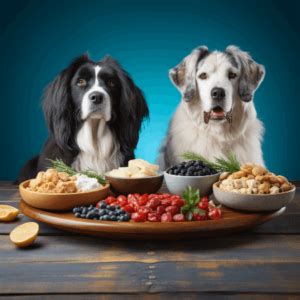Introduction
The pet food industry is undergoing a major transformation, with raw pet food emerging as a popular alternative to traditional cooked diets. Raw pet food is becoming increasingly popular among pet owners who are looking for a more natural and species-appropriate diet for their furry friends. Here’s a deep dive into the raw pet food trend, exploring its benefits, risks, and comparisons with cooked diets.

Raw Pet Food: An Overview
Raw pet food is a diet that consists of uncooked animal products, such as meat, organs, bones, and vegetables. It is designed to mimic the natural diet of wild animals, which have evolved to consume raw foods.
Benefits of Raw Pet Food
- Improved digestion: Raw pet food contains enzymes and probiotics that aid in digestion, reducing the risk of gastrointestinal issues.
- Increased nutrient absorption: Raw foods retain more nutrients than cooked foods, which can improve overall health and well-being.
- Reduced allergy risk: Raw diets are hypoallergenic and can reduce the risk of allergies and skin conditions.
- Improved dental health: Chewing on raw bones helps clean teeth and prevent plaque buildup.
- Enhanced immune system: Raw pet food contains vitamins and antioxidants that strengthen the immune system.
Risks of Raw Pet Food
- Bacterial contamination: Raw pet food can contain harmful bacteria, such as Salmonella and E. coli, which can cause illness in both pets and humans.
- Nutritional imbalances: Raw diets can be deficient in certain nutrients, such as vitamin D and calcium, which can lead to health problems.
- Parasite transmission: Raw meat can contain parasites that can be transmitted to pets.
- Bone damage: If not fed properly, raw bones can splinter and cause injuries.
- Cost: Raw pet food can be more expensive than cooked diets.
Raw VS Cooked Pet Food: A Comparison
Nutrient Content: Raw diets retain more nutrients than cooked diets, but cooked diets can be fortified with additional nutrients to compensate.
Digestibility: Raw diets are generally more digestible than cooked diets due to their high enzyme content.
Safety: Cooked diets are considered safer than raw diets due to the reduced risk of bacterial contamination.
Convenience: Cooked diets are more convenient than raw diets, as they can be stored for longer periods and are easier to prepare.
Cost: Raw diets can be more expensive than cooked diets.
Case Detail:
- A study published in the Journal of the American Veterinary Medical Association found that raw-fed dogs had significantly higher levels of taurine, an essential amino acid for heart health, compared to cooked-fed dogs.
- Another study published in the Journal of Animal Science found that raw-fed cats had improved immune function and reduced inflammation compared to cooked-fed cats.
Raw Pet Food: Effective Strategies
- Source from reputable suppliers: Choose pet food suppliers who follow strict food safety protocols.
- Handle properly: Store raw pet food properly and wash hands thoroughly after handling.
- Supplement as needed: Add nutritional supplements to raw diets to ensure they are balanced and complete.
- Monitor your pet closely: Observe your pet for any signs of illness or discomfort after switching to a raw diet.
- Consult a veterinarian: Discuss any concerns or questions about raw pet food with your veterinarian before making a decision.
Tips and Tricks for Feeding Raw Pet Food
- Start gradually: Introduce raw food into your pet’s diet slowly to avoid digestive upset.
- Offer a variety: Provide your pet with a variety of raw meats, organs, and vegetables to ensure they are getting all the nutrients they need.
- Grind bones: For safety, grind raw bones into small pieces before feeding them to your pet.
- Thaw food properly: Thaw frozen raw pet food thoroughly before feeding it to your pet.
- Store food safely: Store raw pet food in the freezer or refrigerator to prevent spoilage.





















